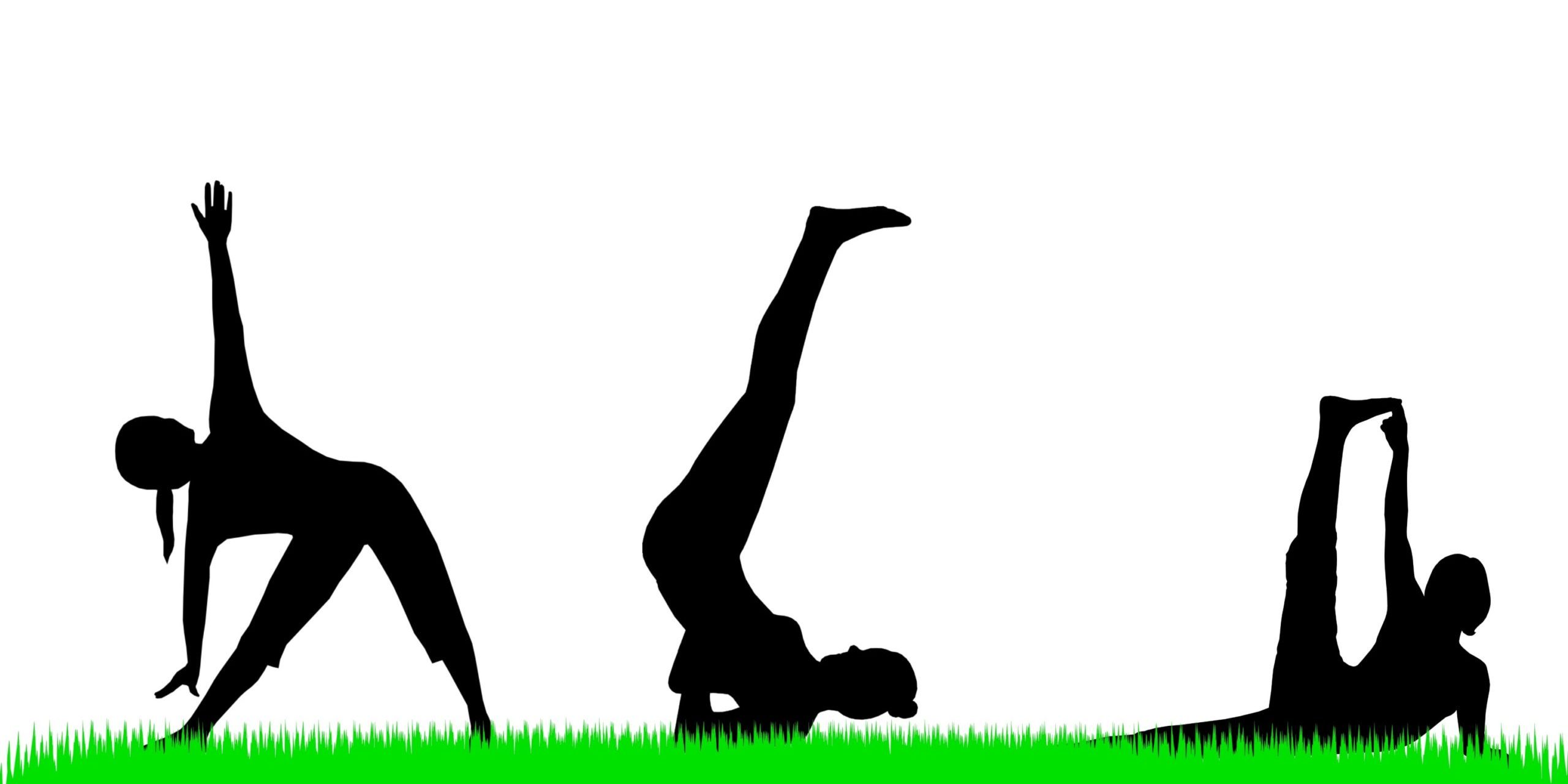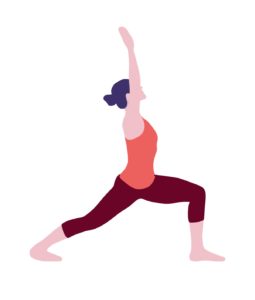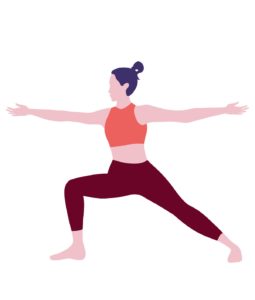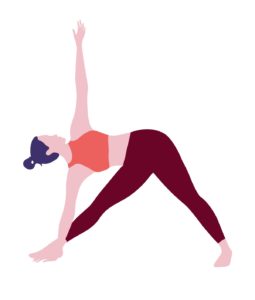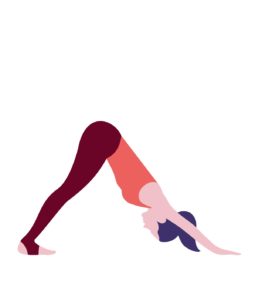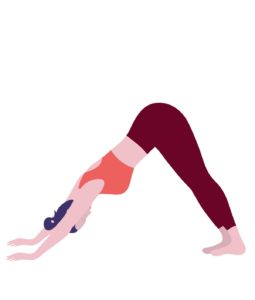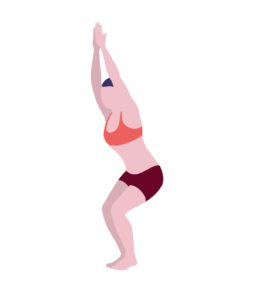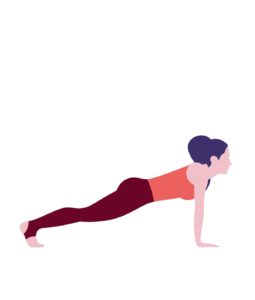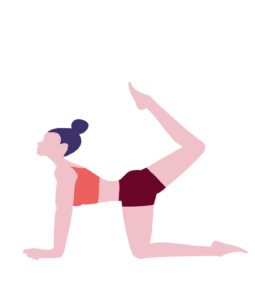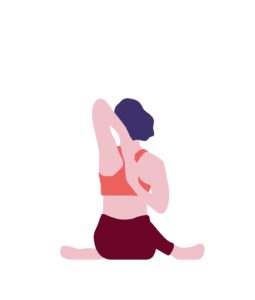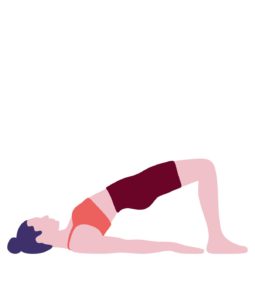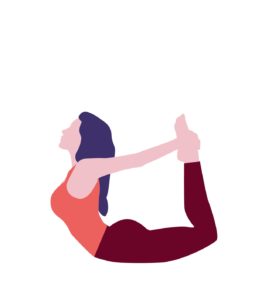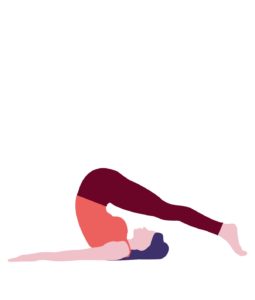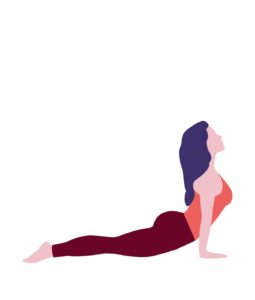Yoga is one of the ancient and most practical disciplines of life that contributes immensely to physical, mental, and spiritual health. Yoga has evolved through the ages, and so have its teachings, albeit without compromising its ancient principles. (CLICK HERE to know more about the various eras in the history of Yoga)
At present, Yoga is basking in the glory of the global fame and acceptance it has gained. People have turned to Yoga to improve their physical well-being and to keep mental stress away. This article discusses the importance of Yoga in improving physical health, specifically in aiding weight loss.
Maharishi Patanjali introduced the eight limbs of Yoga (Ashtanga Yoga), each of which lay focus on behavioral, physical, and psychological modifications to lead a healthier lifestyle.
Maharishi Patanjali states that the third is an asana in the series of eight limbs of Ashtanga Yoga. The concept of asana deals with the knowledge of physical postures of Yoga.
There is a Yoga posture for almost every muscle and organ of the human body. Yoga improves physical health and is also effective in curbing certain health disorders. (CLICK HERE to know more on the benefits of Yoga in improving physical health)
The teachings of Yoga focus on stretching, strengthening, and toning of the muscles and activating better functions of all organs. Perfection of each Yoga posture depends on the positioning of each body part during the pose.
While it is crucial to maintain a certain speed and rhythm while practicing asanas, traditional Yoga does not emphasize a fast pace. This has given rise to a myth that Yoga does not assist in weight loss.
Contrary to popular belief, Yoga plays a crucial role in stimulating healthy weight loss and maintaining an ideal weight range. There are several other ways to lose weight, but Yoga is the most beneficial of them all.
Let us find out how and why!
Table of Contents
How Does Yoga Assist In Weight Loss?
There is an ideal weight range suited to every person, depending on their B.M.I (Body Mass Index). A person’s weight is a cumulative mass of the bones, muscles, fats, and organs in the body. While the weight of the organs and musculoskeletal tissue remains static, the fat deposits vary from time to time. Several factors contribute to the fat tissue present in the human body, viz. metabolic functions, the number of calories you consume, and the number of calories you burn.
Here is how Yoga aids weight loss:
- Regular yoga practice has a positive effect in accelerating healthy fat metabolism and optimizing the lipid levels in the blood and tissues.
- Most Yoga postures help the muscles of the body to stretch and relax. Stretching the muscles helps to squeeze out the excess fat deposits, which contributes to weight loss.
- Yoga helps to burn calories and thus contributes to weight loss.
- There are specific yoga postures aimed at improving digestive functions. A healthy gut assimilates nutrition better and helps utilize fats stored in the body as an energy source.
- Yoga helps to increase physical stamina, flexibility, and strength. A more muscular physique helps endure rigorous physical activity that may be necessary to lose weight.
- Yoga plays a pivotal role in attaining a state of mental calm by reducing stress. Mental stress is one of the major trigger factors for unhealthy weight gain.
- Yoga helps regulate the blood levels of all hormones and stops the unhealthy weight gain that accompanies hormonal imbalance.
Regular yoga practice under a certified Yoga trainer helps to lose the excess flab and reach an ideal weight.
15 Effective Yoga Asanas To Lose Weight
Here are fifteen excellent Yoga postures that help to lose excess flab. The asanas work on burning excess fat, maintaining hormonal balance, improving the digestive and metabolic functions, or toning the body muscles.
Yoga postures are essentially classified as standing, seating, and lying down, based on the principal position one needs to be in a while performing these postures. This article has also listed all the asanas that are effective for weight loss, as per the same classification.
STANDING YOGA POSTURES
Asana 1 – Virabhadrasana
Yoga students can practice the following two variations of the Virabhadrasana or the warrior pose.
Type 1
- Go into the Adho Mukhasvanasana pose. (check asana number 4)
- Take your right foot forward till the toes are in line with the fingers of both hands.
- Elevate your upper body and raise your arms upwards.
- Your right thigh should be parallel to the ground in the final pose. Your arms must be parallel to one another, with both palms facing one another.
- Engage your core throughout the asana while stretching your back and arms adequately.
- Repeat the same posture by taking the left foot forward.
Type 2
- Stand on the ground with your feet spread apart in a wide stance.
- Elevate your arms sideways till they are parallel to the ground, with the palms facing downward.
- Turn your right foot to point the toes outward. Turn your left foot slightly inward so that its toes point towards the heel of the right foot.
- Bend your right knee till your right thigh is parallel to the ground, and turn your neck to the right.
- Keep your right thigh bone, right hip, and right shoulder engaged so that you can balance your body weight well.
- Repeat the same posture with the left leg as well.
Virabhadrasana will require you to extend your chest outward and maintain a taut stance. Virabhadrasana helps to lose excess weight by toning the back, arms, thighs, and abdomen muscles. Virabhadrasana also enhances healthy digestive functions that contribute to weight loss.
Asana 2- Trikonasana
- Stand on the ground with both feet set apart in a wide stance. (roughly 3-4 feet apart)
- Turn your right foot outward by an angle of 90 degrees. Twist your left foot slightly inward so that its toes point toward the heel of the right foot.
- Bend sideways from your hips till your right hand can touch the ankle or shin of your right leg.
- Simultaneously elevate your left arm till its fingers point towards the ceiling. Do not bend your knees or elbows while performing Trikonasana.
- Repeat the same posture on the left side.
The word Trikonasana is derived from the Sanskrit word Trikona, which means triangle. The body resembles the shape of a triangle while performing the asana. Trikonasana helps tone the back, shoulders, thighs, and arms muscles. The asana also helps to improve digestion and thus contributes to healthy weight loss.
Asana 3- Adho Mukha Svanasana
- Come down on all fours with both knees and both palms touching the ground. Keep some distance between your knees.
- The knees and hips should be in one line, and the palms should be slightly ahead of your shoulders.
- Gradually elevate your hips by lifting your knees off the floor. Straighten your knees to touch your heels to the floor. Keep your feet at a hip’s distance width from one another.
- Balance your bodyweight equally on both the hands and feet.
- Keep your neck in a neutral position and fix your gaze on the ground. Try to bring your head closer to the ground.
Adho Mukha Svanasana, also known as the downward dog pose, is one of the fundamental Yoga asanas. It is performed as an independent Yoga pose and also as a part of other Yoga postures. Adho Mukha Svanasana helps to lose weight due to its impactful action on the muscles of the arms, thighs, back, and abdomen. The asana also helps to improve blood circulation and concurrently eliminate lipid deposits from the blood vessels.
Asana 4- Parvatasana
- Come down on all fours such that both knees are spread at a shoulder distance from one another.
- Balance your bodyweight equally on both the palms and both the knees.
- Gradually elevate your hips and shoulders till you straighten your knees and elbows. Keep your feet touching one another.
- Press your feet and palms against the ground to balance your bodyweight equally.
- Your head must not go ahead of your shoulders and arms when you are bent downwards.
- Your body will assume the shape of an inverted letter ‘V’ in the final posture.
Parvatasana helps in toning the muscles of the arms, abdomen, and thighs. Parvatasana has a profound beneficial effect on controlling mental stress and is pivotal in losing unhealthy weight.
Asana 5- Utkatasana
- Stand straight with your feet spread some distance apart from one another.
- Elevate your arms in front of you till they are at the level of your shoulders
- Press your feet firmly against the ground and bend both knees simultaneously.
- Tilt your pelvis backward and outward and place your body as if sitting on a chair.
- Bend forward just enough to maintain the balance of your body.
- Your knees should never go ahead of your toes as you bend.
- Continue this position for some time before you relax your body and sit on the ground cross-legged.
Utkatasana aids weight loss by helping to burn excess fat from the abdomen, thighs, hips, and buttocks.
Asana 6- Phalakasana
- Come down on your hands and knees so that the knees and palms touch the ground and are some distance apart.
- Gradually straighten your knees and elbows while elevating your torso.
- Touch both the palms and the balls of both feet to the ground.
- Keep the torso parallel to the ground and look straight ahead.
- Remain in this pose up to a count of five or ten before returning to a normal relaxed posture.
Phalakasana helps to tighten the abdominal muscles and strengthen the core. The abdominal muscles undergo fine strain and stretch to squeeze out any excess fatty deposits present.
Asana 7- Vyaghrasana
- Kneel on the ground and touch both palms on the floor. Keep shoulder-width distance between your knees.
- Press your palms firmly against the bottom and gradually elevate your left leg till it is parallel to the floor.
- Bend your left knee and elevate your thigh till you feel the muscles of your left leg and buttock stretching adequately.
- Repeat the same posture with the right leg as well.
Vyaghrasana helps to remove excess flab from the thighs and buttocks. Vyaghrasana tones the abdominal muscles and helps to aid healthy digestion. Vyaghrasana is an ideal Yoga posture for weight loss due to its health benefits.
SEATING YOGA POSTURES
Asana 1- Gomukhasana
- Be seated and keep your legs stretched out in front of you. Keep the feet close to each other.
- Fold your right leg and place your right foot under your left buttock.
- Fold your left leg over your left thigh such that both knees rest one above the other.
- Sit with your back erect, raise your left arm and bend your elbow.
- Simultaneously bend your right elbow and interlock the fingers of both hands behind your back.
- Stretch your chest outward and continue regular breathing.
Gomukhasana helps to stretch the deeper abdominal muscles, thus aiding the removal of abdominal fat deposits. This Yoga posture also helps to promote healthy digestion and active metabolism. A combination of these factors makes Gomukhasana an indispensable part of your weight loss routine.
Asana 2- Baddha Konasana
- Sit with your spine erect, and your legs stretched straight in front of you. Both your legs must be parallel to one another.
- Bend your knees such that your heels are close to your buttocks and touching one another.
- Gradually bring down your knees on the side such that the soles of both feet touch each other. Pull your feet towards your pubis and hold the big toes of either foot with your index finger and thumb. If you cannot do this, try to hold both ankles.
- Do not overstrain your thigh muscles in an attempt to bring your knees closer to the ground.
Baddha Konasana aids in losing excess weight by stretching and toning the thigh muscles. Baddha Konasana helps to maintain a healthy digestive system, which plays a pivotal role in losing the excess flab and maintaining a healthy weight.
LYING YOGA POSTURES
Asana 1- Sethu Bandhasana (Back Lying Pose)
- Lie on your back with your extremities relaxed by the side of your body.
- Bend your knees and place your feet some distance away from one another. The feet should not be touching your hips.
- Keep your arms in the proximity of your body with the palms touching the ground.
- Gradually elevate your lower back, torso, and upper back off the ground.
- Roll your shoulders inward and try to touch your chin to your chest.
- Balance your weight equally on your feet, arms and shoulders.
- Remain in this posture for some time before lowering your back to the ground.
Setu Bandhasana is referred to as the bridge pose, as the body assumes the shape of a bridge while performing the asana. Setu Bandhasana helps in tightening the core and toning the abdominal muscles. Regular practice of Setu Bandhasana helps to curb unhealthy weight gain associated with thyroid dysfunction and mental stress.
Asana 2- Dhanurasana (Belly Lying Pose)
- Lie down on your tummy, on an even ground.
- You may place a folded blanket or towel under your pelvis for support.
- Bend your knees and hold your ankles. Keep your ankles extended so that your toes point towards your back.
- Elevate your head, chest, and shoulders, and firmly hold on to your ankles. Elevate your thighs and knees such that your pelvis bears your body weight.
- Remain in the above position for a few breaths before relaxing your body.
Dhanu is the Sanskrit word for bow, which is why Dhanurasana is known as the bow pose. Dhanurasana helps to lose belly and waist fat and helps to tone the abdominal muscles. Dhanurasana also helps to tone the muscles of the thighs and arms.
Asana 3- Halasana (Back Lying Pose)
- Lie on your back with your extremities at the side of your body in a relaxed position.
- Place your feet close and gradually elevate your legs till they are perpendicular to the ground. Do not bend your knees.
- Lift your pelvis off the ground and take your legs upward and backward towards your head.
- Support your lower back with your hands to get stability. Draw your elbows closer together below the pelvis.
- Try to tilt your legs more so that the toes touch the ground. You may release the support of your back and interlock your fingers instead without bending your elbows.
- Hold the position for some time before relaxing your body.
Halasana is among the list of yoga postures that are slightly difficult to perform. It is advisable to learn the techniques of Halasana from a certified Yoga teacher. Halasana helps to develop taut and well-toned abdominal muscles. This Yoga posture also has a massaging effect on the intestines, which helps to improve digestive functions. Both these benefits of Halasana help in healthy weight loss. Halasana is known as the plow pose because the body resembles a plow while performing the asana.
Asana 4- Bhujangasana (Tummy Lying Pose)
- Lie on your abdomen with your feet extended so that the soles face the sky.
- Keep your legs close together and place both palms touching the ground close to the shoulders.
- Press both palms on the ground and lift your head, neck, shoulders, and chest off the ground.
- Arch your neck and body backward as much as possible by straightening your arms. Balance your body weight between both the palms and legs.
- Remain in this position for some time before relaxing your body.
Bhujangasana helps in losing weight by helping to eliminate fatty deposits from the abdominal muscles. Bhujangasana has a beneficial effect on blood circulation and mental health and plays a pivotal role in weight loss.
Asana 5- Naukasana (Back Lying Pose)
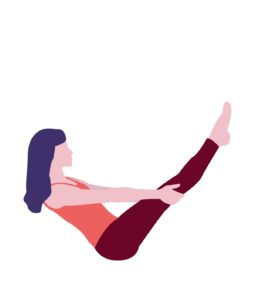
- Lie on your back and place both arms and legs at the side of your body in a relaxed posture.
- Gradually elevate your head, chest, and legs off the ground simultaneously.
- Elevate your arms ahead of your body so that the tips of your fingers are close to your shins.
- Remain in the posture for some time before you relax your posture.
Naukasana is known as the boat pose because the body resembles the shape of a boat while performing the asana. Naukasana helps to tone the abdominal muscles and eliminates excess fatty deposits from the body.
Surya Namaskar
Surya Namaskar is a compilation of twelve Yoga postures performed sequentially. Each asana has a positive effect on the muscles and internal organs of the body. Surya Namaskar helps lose weight by toning the muscles, curbing hormonal disturbances, optimizing blood cholesterol levels, and regulating metabolic functions. Surya Namaskar involves standing, seated, and lying down Yoga poses, and hence cannot be classified into just one of the categories.
CLICK HERE to know the steps of Surya Namaskar.
Here are a few handy tips to make your Yoga sessions easy.
- Learn and practice Yoga with a professional Yoga trainer only.
- Continue regular breathing throughout each asana without holding your breath.
- It is preferable to use a Yoga mat for a firmer grip while performing Yoga asanas.
- Avoid practicing Yoga for at least two hours after a heavy meal.
- Choose to practice Yoga in a well-ventilated and brightly lit room.
- Try to remain in each Yoga posture for 30 seconds and increase the duration gradually.
Yoga works wonders on physical and mental health if it is practiced regularly and in a proper manner.
Weight Loss With Meditation
Meditation and Yoga are almost always mentioned in the same breath. The practice and benefits of both Yoga and meditation complement each other. Meditation has a crucial role to play in any healthy weight loss regimen.
Losing weight requires physical efforts and a relaxed state of mind. Anxiety, domestic stress, and a competitive lifestyle are modern problems that have subtly taken a toll on our mental health. A disturbed mind is an easy target to develop health issues like unexplained weight gain. Meditation is one of the ancient techniques of experiencing mental relaxation and calm.
A basic step-by-step guide to meditation:
- Sit in a bright, well-ventilated room that is devoid of any disturbances.
- Wear loose, comfortable clothing that will allow you to sit in a relaxed manner.
- Sit cross-legged on the floor and relax your body.
- It is preferable to close your eyes while you meditate.
- Focus on an arbitrary point and apply your energy to fix your thoughts on that point only.
- Try to eliminate pessimistic thoughts from your mind and focus on all the good things you have.
- You may focus on any long-standing dream or goal you wish to achieve soon.
- You may also recite a mantra (religious or spiritual hymn) repeatedly as you meditate. You may repeat the mantra audibly or practice mental repetition. Many people prefer to repeat Om, which is one of the Beej mantras, while meditating. (CLICK HERE to know more on Beej mantras)
- Remain seated, with your mental focus intact and your eyes closed, for 5-10 minutes.
You will experience a state of mental bliss and calm as you have never experienced after each meditation session. The article has captured the basic steps of meditation. You may practice meditation independently after you have learned it from an experienced Yoga teacher. You may also increase your mediation sessions in duration and frequency once you master the techniques well.
Meditation will help to rid the mind of stress, anxiety, anger, and other negative emotions that we tend to harbor. Once we shed the excess emotional baggage that we have been fruitlessly bearing, we find it very easy to shed the extra flab from our bodies as well. Practice meditation religiously for a healthy mind and a healthy physique.
We often associate weight loss with cutting down on carbs and junk food and spending hours sweating it out in the gym relentlessly. However, you can lose your weight and maintain it within a healthy range only if you know and address the cause of your unhealthy weight gain.
There is no rule which decides how many pounds one can shed if they practice Yoga daily. Numerous factors, like metabolism, general lifestyle, digestive power, and appetite, influence their capacity to lose or gain weight. Yoga is essential in losing weight, but one must accompany a disciplined diet regimen with a healthy diet plan. If you follow a healthy lifestyle and practice each of the asanas that this article has discussed for one minute daily, you have just spent the most productive 15 minutes of your life.
15 asanas in 15 minutes are all that stands in your way towards reaching a healthy range of weight.
The profound effect that Yoga has on initiating and sustaining healthy

